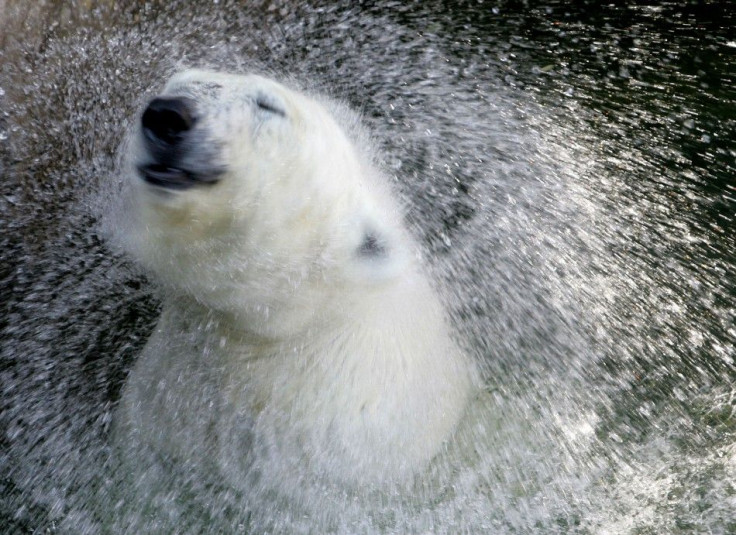Polar Bear In German Zoo Died From Zebra Herpes Virus, Scientists Say

German scientists have trace a disease that killed one polar bear and sickened another at the Zoological Gardens in Wuppertal to an unlikely source - zebra herpes.
In 2010, 20-year-old bear Jerka and 16-year-old male Lars began showing the symptoms of the brain-swelling disease encephalitis. Jerka died, but zoo veterinarians were able to save Lars.
Leibniz Institute for Zoo and Wildlife Research scientist Alex D. Greenwood and his colleagues studied DNA and RNA from Jerka's brain and liver compared to samples from other polar bears. In a paper published in the journal Current Biology on Thursday, the researchers say Jerka died thanks to a bug normally found in zebras that's an amalgam of two different kinds of equine herpes virus.
It's still a mystery as to how the bears contracted the virus. At Wuppertal, the zebra enclosure is more than 200 feet away from the polar bears and the animals are not tended by the same zookeepers.
The scientists were also surprised to find that Struppo, a bear in a different zoo that died of kidney failure, also contracted the virus. Since Struppo had no contact with Lars or Jerka, that suggests that the zebra herpes has spread in by least two independent vectors.
But bears and zebras aren't the only animals that play host to this particular kind of virus. The two equine herpes viruses that gave rise to the particular zebra strain have also caused fatal encephalitis in gazelles and guinea pigs.
"These viruses do not seem to respect species boundaries and in fact, we don't really know whether they have any," co-author and Freie Universitat Berlin researcher Klaus Osterrieder said in a statement. "One conundrum is that these viruses are not particularly stable in the environment, so it is important to figure out how they move between species."
Osterrieder and his colleagues think that another animal could be the guilty party, possibly mice or rats.
The deaths of Jerka and Struppo illustrate both the danger of pathogens jumping from species to species - as seen in the deaths of 162 seals last autumn, struck down by a new strain of avian flu - and the potential cauldron of disease created by housing lots of animals within a very small range.
"Zoos unintentionally provide pathogens with a high diversity of species from different continents and habitats assembled within a confined space," the authors wrote.
SOURCE: Greenwood et al. "A Potentially Fatal Mix of Herpes in Zoos." Current Biology published online 16 August 2012.
© Copyright IBTimes 2024. All rights reserved.





















